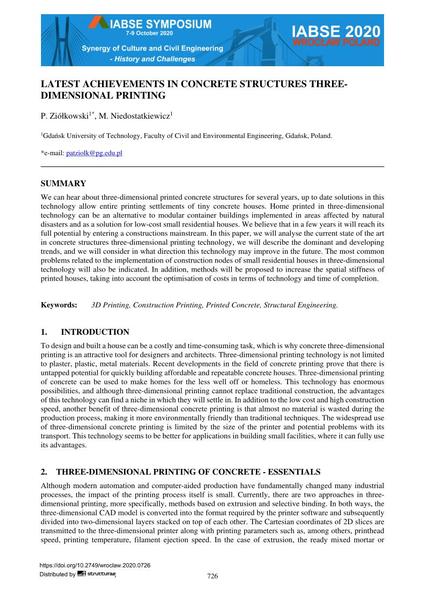Latest Achievements in Concrete Structures Three-Dimensional Printing

|
|
|||||||||||
Détails bibliographiques
| Auteur(s): |
P. Ziółkowski
M. Niedostatkiewicz |
||||
|---|---|---|---|---|---|
| Médium: | papier de conférence | ||||
| Langue(s): | anglais | ||||
| Conférence: | IABSE Symposium: Synergy of Culture and Civil Engineering – History and Challenges, Wrocław, Poland, 7-9 October 2020 | ||||
| Publié dans: | IABSE Symposium Wroclaw 2020 | ||||
|
|||||
| Page(s): | 726-731 | ||||
| Nombre total de pages (du PDF): | 6 | ||||
| Année: | 2020 | ||||
| DOI: | 10.2749/wroclaw.2020.0726 | ||||
| Abstrait: |
We can hear about three-dimensional printed concrete structures for several years, up to date solutions in this technology allow entire printing settlements of tiny concrete houses. Home printed in three-dimensional technology can be an alternative to modular container buildings implemented in areas affected by natural disasters and as a solution for low-cost small residential houses. We believe that in a few years it will reach its full potential by entering a constructions mainstream. In this paper, we will analyse the current state of the art in concrete structures three-dimensional printing technology, we will describe the dominant and developing trends, and we will consider in what direction this technology may improve in the future. The most common problems related to the implementation of construction nodes of small residential houses in three-dimensional technology will also be indicated. In addition, methods will be proposed to increase the spatial stiffness of printed houses, taking into account the optimisation of costs in terms of technology and time of completion. |
||||

